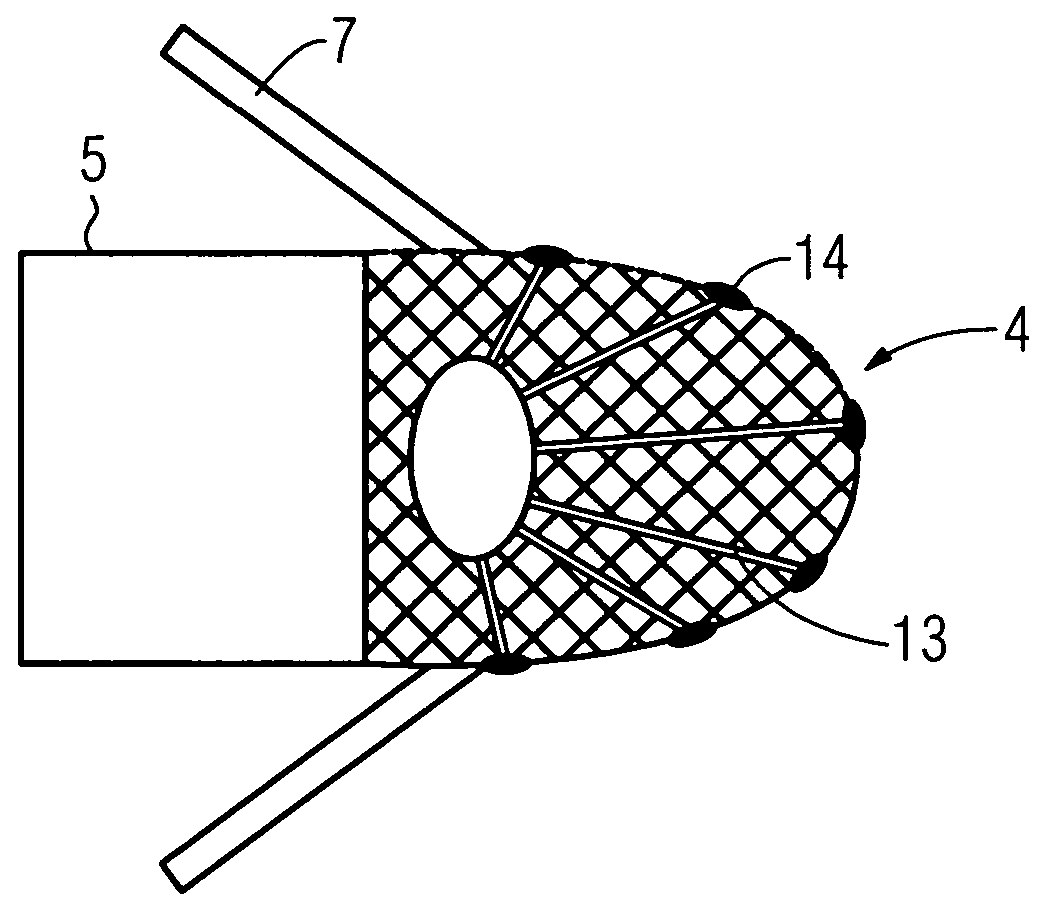Intravenous pacemaker electrode
a pacemaker electrode and electrode technology, applied in electrotherapy, therapy, etc., can solve the problems of increasing power consumption, reducing the service life of the pacemaker battery, and the pacemaker no longer performing the intended function, and achieve the effect of low changes over tim
- Summary
- Abstract
- Description
- Claims
- Application Information
AI Technical Summary
Benefits of technology
Problems solved by technology
Method used
Image
Examples
Embodiment Construction
[0043]Corresponding parts, or parts with the same function, are given the same references in all figures.
[0044]FIGS. 1 and 2 show schematically part of a pacemaker electrode 1 for transmitting stimulation pulses to a myocardium 2. The pacemaker electrode may be from a unipolar pacemaker or equally from a bipolar pacemaker, where in each case it is possible not only to transmit stimulation pulses to the myocardium, but also to detect, or sense, signals coming from the heart. An electrode tip 4 is attached to the distal end of an electrode cable 3 of the pacemaker electrode 1. An electrical conductor 6 runs inside the electrode cable 3, which has an insulating sleeve 5, up to the electrode tip 4. Two fold-out anchoring flaps 7 are attached to this tip, which act like an expandable anchor to enable or facilitate the anchoring of the electrode tip 4 in the tissue of the patient. The anchoring aids 7 may also differ from the simplified diagram, for example they may have a form known from...
PUM
 Login to View More
Login to View More Abstract
Description
Claims
Application Information
 Login to View More
Login to View More - R&D
- Intellectual Property
- Life Sciences
- Materials
- Tech Scout
- Unparalleled Data Quality
- Higher Quality Content
- 60% Fewer Hallucinations
Browse by: Latest US Patents, China's latest patents, Technical Efficacy Thesaurus, Application Domain, Technology Topic, Popular Technical Reports.
© 2025 PatSnap. All rights reserved.Legal|Privacy policy|Modern Slavery Act Transparency Statement|Sitemap|About US| Contact US: help@patsnap.com



